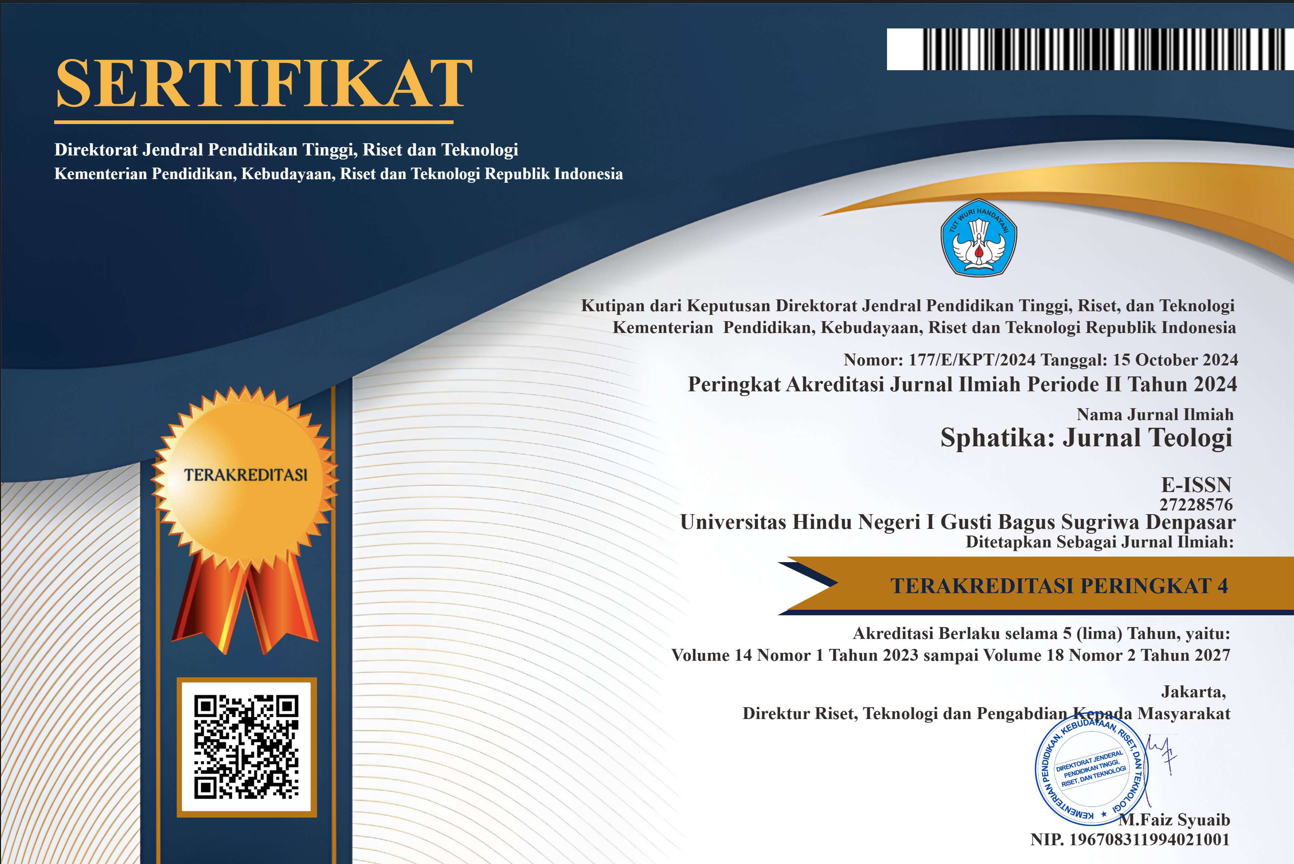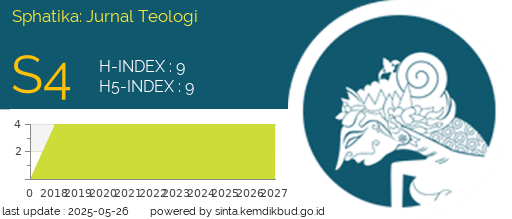Mengenal Tika sebagai Kalender Bali Kuno dalam Kaitannya dengan Ilmu Jyotisha
DOI:
https://doi.org/10.25078/sphatika.v14i2.3054Keywords:
calendar; jyotisha; tikaAbstract
A calendar is one item whose function and use is very important at home or in the office, because from the calendar humans get information related to the time period of the day, date, month and year. One of them is the past calendar system used by the ancient Hindu community which used a calendar system known as the Tika Calendar. The Tika calendar is an object that is generally made of wood to see the day, rest and determine the dewasa ayu or auspicious days by using various special signs to determine the time period of the dewasa ayu. To read Tika, knowledge of Wariga science and understanding of special signs in the form of images or symbols that are displayed on the Tika are needed. The basic form of Tika is a picture of 30 wuku columns and 7 rows depicting the 7 long days of each wuku. The seven days in the basic image of Wuku are the homes of Sapta Wara, wewaran whose cycle is 7 days. In general, the Tika section consists of 30 wuku columns located at the top. Then on the side there are eight lines. Seven lines of the day or Saptawara and the eighth line is Ingkel. The shape of Tika also varies, some are made of wood, paper and cloth. The connection between the Tika Calendar and Jyotisha as the Science of Hindu Astronomy and Astrology which are very closely related to the all activities of Balinese Hinduism.
References
Ariana, I.B. Putra Manik & Ida Bagus Budayoga. 2016. Ala Ayuning Dewasa Ketut Bangbang Gde Rawi (Sebuah Canangsari). Denpasar: ESBE Buku.
Putra. (2020). KALENDER BALI DALAM KEHIDUPAN UMAT HINDU DI BALI (Perspektif Pendidikan Sosio-Religius). VIDYA SAMHITA: Jurnal Penelitian Agama. Vol: 6 No: 1.
Ramdani, Fajri Zulia. (2020). Eksistensi Kalender Bali dalam Kultur Sosial Masyarakat Multireligius Bali. Religious: Jurnal Studi Agama-Agama dan Lintas Budaya, DOI : 10.15575/rjsalb.v4i2.8593, 81-92.
Redana. (2006). Metodelogi Penelitian. Denpasar: Institut Hindu Dharma Negeri Denpasar.
Sugiyono. (2013). Metodelogi Penelitian Kuantitatif Kualitatif dan R&D. Bandung: Alfabeta.
Sujana, K., & Djiwandono, B. (2022). Eksistensi Kalender Bali dalam Kultur Sosial Masyarakat Multireligius Singaraja. Relinesia: Jurnal Kajian Agama Dan Multikulturalisme Indonesia, 1(1), 88–95.
Sutarya, I Gede. (2017). Astrologi Bali sebagai Dialog Lintas Agama dalam Pariwisata Spiritual. Brahma Widya, Jurnal Teologi, Filsafat, Yoga dan Kesehatan, Vol.4 No.1 Oktober 2017 Halaman 1 – 6.
Sutriyanti, Ni Komang. (2016). Implementasi Lontar Wewatekan Wawaran Dalam Keluarga Hindu. Denpasar: Jurnal Agama Hindu Program Pasca Sarjana. Vol. 19, No. 2:65-76.
Thompson, Richard. (1989). Vedic Cosmography and Astronomy. Bhaktivedanta Book Trust.
Tim Penyusun. (1992). Kunci Wariga Dewasa. Denpasar: PT. Upada Sastra.















